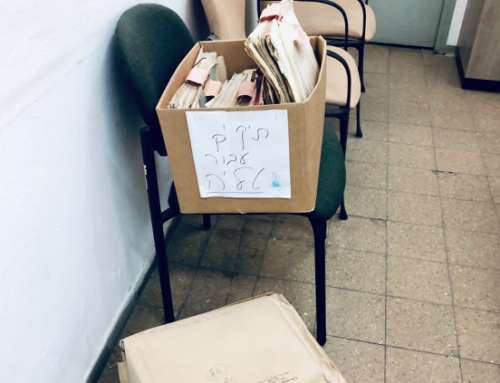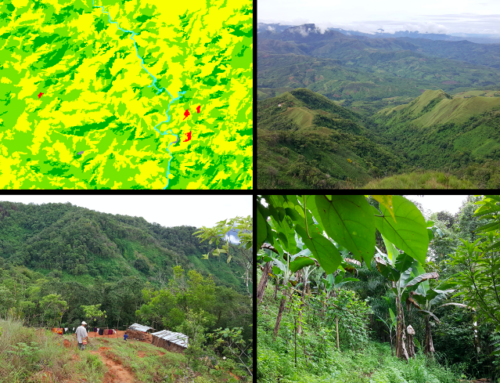“Look at us, we are unemployed,” Aijaz[i] told me, as we walk through his village in Indian-occupied Kashmir in April, passing a group of young men sitting on a shop ledge. “We sit around all day. Those guys are college educated, I have a master’s degree, and for what? The situation here is broken.” Considering Aijaz and the young men he referenced, I was initially confused – weren’t they each involved in some aspect of willow basket production? In what sense were they unemployed?
Aijaz’s claim came at a time when regional unemployment rates were a topic of daily conversation in the village. Two India-wide labor surveys had released quarterly reports in March and April of 2022, which both indicated that the Indian administrative unit of Jammu and Kashmir had the second highest unemployment rate nationally. A flurry of newspaper articles, politicians’ and government officials’ statements, and villagers’ own posts on social media attempted to explain these high unemployment rates in divergent ways. But Aijaz’s statement made me pause: Were they talking about the same thing? To what did “employment” refer in each of these accounts, and how did a wave of concern around Kashmir’s unemployment rate buoy a number of distinct claims? In this piece, I consider the gap between employment and work in Aijaz’s words, and how it maps onto the manner in which employment is measured in Indian-occupied Kashmir.
At one level, Aijaz’s distinction foregrounds the structure of payment in various forms of labor. For basket weavers in the village, a significant advance in cash from the broker to the artisan usually initiates a working relationship between the two. Nazar, another basket weaver, described his most recent return to basket weaving as occurring “in our time of need.” After resigning from a teaching position at a local school, Nazar borrowed three lakh (300,000) rupees from a basket dealer to pay for his wife’s medical expenses, which he was to repay by providing the dealer with a regular supply of completed baskets. With an average daily production of twenty-two baskets over six days per week, Nazar would have paid back the dealer within nine months—had he not again borrowed a large sum from the dealer a few months later, this time to finance a wedding gift for his wife’s brother. “We are all working off debts,” Nazar explained of the village basket weavers. “The majority of households are in the negative. We’re stuck here.” This description of artisan labor came in contradistinction to ideal forms of employment, which Nazar and others characterized as having consistent, monthly pay schedules, deposited directly into bank accounts. Although certain types of employment proved financially untenable (such as Nazar’s teaching position, which barely broke even with travel expenses to reach the school), many in the village extended these forms of employment for as long as possible, supplemented by borrowing and other household members’ labor to “work off the debts.” “I am a schoolteacher, not a basket weaver,” Nazar insisted, underscoring that identification with a particular career did not match his present day-to-day work activity. With reference to his occupation, schoolteacher, he was unemployed.

The day-to-day work of basket weaving in Indian-occupied Kashmir. Photo by Marios Falaris.
This distinction between occupation and present work activity carried over to other instances of borrowing. Aijaz’s cousin Gulzar offered to lend Aijaz the surprising sum of 6 lakh rupees to complete the purchase of a plot of land—a very large sum of money in the village, let alone for Gulzar. He had just received a loan from the local bank sponsored by the Prime Minister’s Employment Generation Program (PMEGP), so he had money to lend to others. While lending money or the purchase of land were not scheduled uses for the loan, Gulzar drew upon the commonsense in the village that large sums of money are distributed to those “in need” who will then repay the debt in regular intervals, as in the model of basket weaving. While he had received a loan for entrepreneurship activities, Gulzar did not understand this to have altered his occupation or employment status. He was not now an “entrepreneur.” In his estimation, he had simply received a loan which he would have to pay back.
It was specifically the uptick in entrepreneurship loans in the Union Territory of Jammu and Kashmir, however, that government officials touted as proving the success of government initiatives to curb high unemployment. Through officials’ statements, a narrative emerged where: 1) extremism and militancy in Kashmir had caused high unemployment rates in the region, and 2) these “distractions” could be countered by expanding youth employment, specifically through entrepreneurship initiatives. The same loan that Gulzar had received was thus claimed by government officials as having generated entrepreneurship, and in turn, employment. In this narrative, the news of high unemployment rates in the region only further proved the need for additional investments in entrepreneurship initiatives (rather than indicate their shortcomings). For government officials, the entrepreneur was the solution to the problem of the militant.
For the regional National Conference party, which sought the reinstitution of the state’s autonomy within India under Article 370 of the constitution, high unemployment rates were an occasion to criticize the central government’s policies in the region. In this narrative, high unemployment revealed the central government’s mismanagement of the administrative services. Positions had formerly been reserved for state residents, and now, due to the preference for residents of other states in India, those positions were being filled by nonlocal applicants, leading to increased unemployment in Jammu and Kashmir. The solution was narrowly defined as the resumption of statehood and Jammu and Kashmir’s autonomy—and significantly, the resumption of regional political parties’ governance—so that, they claimed, they could protect the rights of state residents, including highly coveted administrative services positions.
But for Aijaz, Nazar, Gulzar, and others in the village, the question of employment comes down to status. Through higher education, rare among the elders in the village, the younger generations have sought to attain a higher status for themselves and their households. When those degrees do not yield a salaried position, however, the attainment of that higher social status remains uncertain at best. Artisan labor may help households pay their expenses, but it is also associated with a lower social status. Thus, workers who still aspire to salaried employment express that they are not content with their current form of work. Both working off a debt (rather than earning outright) and still actively seeking a salaried job to match their level of education and communicate their social status, respondents would prefer to identify as unemployed (seeking work but presently without). It is a classification that communicates the indeterminacy of their current position, neither sealing them into lower status artisan work nor precluding their aspirations for salaried employment. Being categorized as unemployed for many educated young men in the village is preferable to the finality of being classified as employed as an artisan laborer.
In official definitions used by the two national labor surveys in India, unemployment includes two components: not having worked (during a specific reference period), but still seeking employment (Abraham and Shrivastava 2022). The second clause—“still seeking employment”—overlaps with the aspiration that young men in the village most identify with. There are many differences between the two surveys—their sampling methods, reference periods—but I will limit my discussion here to a single difference in data collection protocol. The Centre for Monitoring Indian Economy (CMIE), a private thinktank which conducts a Consumer Pyramid Household Survey, includes one question on employment. For that question, survey enumerators first ask respondents to classify household members by their employment status, then fill in work details (ibid.). In the context of my interlocutors, such an elicitation method would likely lead to educated basket weavers self-classifying as unemployed. With employment status first, the emphasis for them is placed on the second clause of unemployment: “still seeking employment.” By contrast, the Periodic Labour Force Survey (PLFS) conducted by India’s National Sample Survey Office asks four distinct questions about work hours in the year, month, week and day preceding the survey (ibid.). Depending on how the survey is conducted, the latter elicitation method may categorize educated young men in the village as employed, first capturing their work hours through the survey instrument and later categorizing that work as employment.
Indeed, the CMIE and PLFS quarterly reports published in March and April 2022 presented a remarkably wide margin of difference in the unemployment rates in Jammu and Kashmir: 46.3% for the PLFS, 25% for the CMIE. I linger on this difference not to account for it, but to draw out the indeterminacy contained within such unemployment data. Following the survey protocols, Aijaz, Nazar and Gulzar would have been categorized as unemployed in the CMIE dataset and employed in the PLFS dataset. When such survey instruments cross between distinct regional and subregional senses of employment, what then does aggregate survey data represent? Even as such, the life of these unemployment rates reveals something else, as they did not by and large spark questions about their difference or how the rates were produced. The rates, imprecise or otherwise, crystallized a problem for which distinct actors—government officials or regional politicians—had diagnoses.
And Aijaz? His statement “we are unemployed” arose in this moment of wider concern over unemployment in Kashmir. But rather than advocate policy intervention, Aijaz’s claim was enunciated in the first-person plural “we.” This claim to our unemployment under the broken conditions of military occupation seems to measure a sense of injustice and insufficiency of labor conditions—a measure that dignified work is unattainable in the prevailing political situation.
Notes
[1] Interlocutors are referred to with pseudonyms.
References
Abraham, Rosa and Anand Shrivastava. 2022. “How Comparable Are India’s Labour Market Surveys?” The Indian Journal of Labour Economics 65(2): 321-346.
Marios Falaris is a PhD candidate in the Department of Anthropology at Johns Hopkins University studying masculinities and the work of intimacy in Indian-occupied Kashmir. Their research has been supported by the Fulbright-Nehru Research Award, the American Institute of Indian Studies, and various programs at Johns Hopkins. They received their BA in Ethnicity, Race & Migration from Yale University and MSc in Anthropology and Development from the London School of Economics and Political Science.
Cite As: Falaris, Marios. 2023. “Unemployment Uncertainties: Work, Status, and Measurement Imprecision” In “data/Big Data in the field” edited by Naveeda Khan, American Ethnologist website, December 22 2023, [https://americanethnologist.org/data-big-data-in-the-field/unemployment-uncertainties/]




